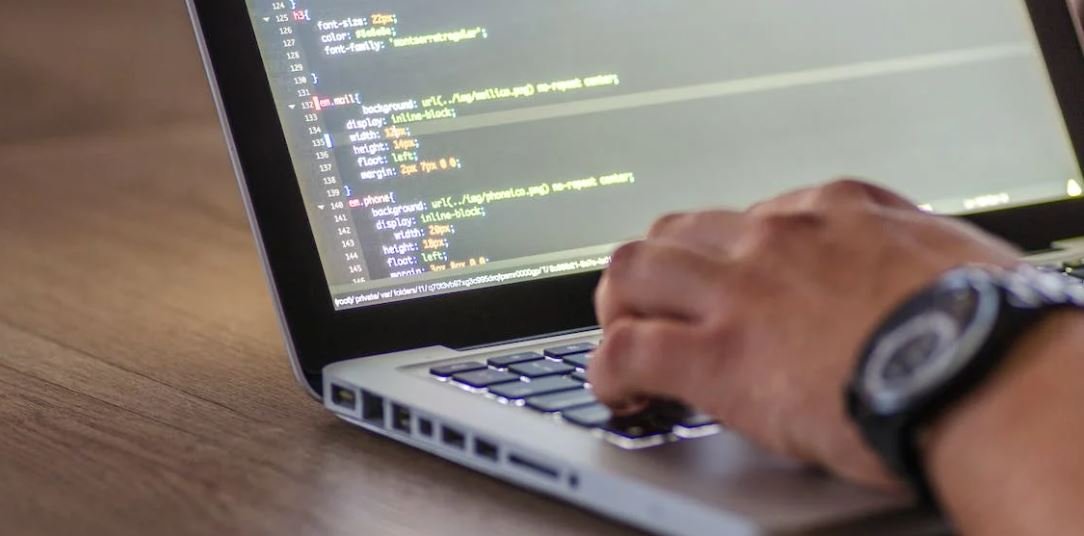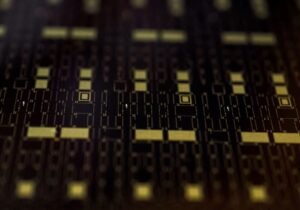How to Use AI to Upscale Video
With the advancements in artificial intelligence (AI) technology, upscaling video quality has become more accessible and efficient than ever before. AI-powered algorithms have the ability to enhance the resolution, sharpness, and overall visual quality of videos, enabling content creators and professionals to improve the viewing experience for their audience. In this article, we will explore the process of using AI to upscale video and uncover how it can elevate your video content.
Key Takeaways:
- AI-powered algorithms can enhance video resolution, sharpness, and visual quality.
- Upscaling video using AI is a cost-effective and time-efficient solution.
- Quality and results may vary depending on the original footage and the AI tools used.
Understanding Video Upscaling Using AI
Video upscaling refers to the process of improving the quality of a low-resolution video by increasing its pixel density and enhancing visual details. AI algorithms analyze the existing video frames and generate additional pixels to interpolate a higher-resolution output, resulting in a sharper and more vibrant image. *AI-powered upscaling provides a way to enhance videos without requiring expensive hardware upgrades or professional video editing skills.*
The Process of AI Video Upscaling
- Pre-processing: Before upscaling, it is advisable to stabilize and enhance the original video to achieve the best results. This step involves eliminating camera shakes, reducing noise, and adjusting color balance.
- Choosing the AI Tool: Numerous AI-powered upscaling tools are available, each with its own strengths and limitations. Research and select the tool that aligns with your requirements and provides the desired video enhancement features.
- Input and Parameters: Upload the video you want to upscale and set the desired parameters, such as target resolution, sharpness level, and noise reduction.
- Upscaling Process: The AI algorithm then analyzes the video frames and produces additional pixels to generate a higher-resolution version. This process may take some time, depending on the length and complexity of the video.
- Post-processing: After upscaling is complete, you can further enhance the video by adjusting contrast, saturation, and other visual elements. This step helps fine-tune the output and achieve the desired aesthetic results.
Comparing AI Upscaling Tools
| AI Tool | Resolution Enhancement | Noise Reduction | Color Correction |
|---|---|---|---|
| Tool A | High | Medium | Low |
| Tool B | Medium | High | Medium |
| Tool C | Low | High | High |
Benefits and Considerations of AI Video Upscaling
- Improved Quality: AI upscaling can significantly enhance the visual quality of low-resolution videos, making them more enjoyable to watch.
- Cost-Effective: Instead of investing in expensive hardware upgrades or hiring professional editors, AI upscaling offers an affordable solution for enhancing video quality.
- Time Efficiency: With AI algorithms handling the bulk of the upscaling process, you can save considerable time compared to traditional manual approaches.
- Diverse Applications: Upscaled videos find applications in various fields, including entertainment, surveillance, archival restoration, and training.
Common Challenges in AI Video Upscaling
- Data Quality Dependency: The effectiveness of AI upscaling heavily depends on the quality of the original footage. Low-quality or heavily compressed videos may not yield satisfactory results.
- Artificial Enhancements: AI algorithms might introduce artificial enhancements or exaggerate existing noise, requiring post-processing adjustments to achieve desired results.
- Hardware and Network Requirements: Some AI upscaling tools may require powerful hardware or an internet connection for real-time processing.
Conclusion
Using AI to upscale video is an efficient and cost-effective solution for improving video quality. AI algorithms can enhance resolution, sharpness, and visual details, greatly enhancing the viewing experience for your audience. By selecting the right AI tool, pre-processing the video, adjusting parameters, and post-processing the upscaled version, you can achieve impressive results in a fraction of the time. Keep in mind the considerations and challenges associated with AI video upscaling, and experiment with different tools to find the one that best fits your needs.

Common Misconceptions
Misconception 1: AI can magically enhance any video
One common misconception about using AI to upscale videos is that it has the ability to enhance any video regardless of its quality. While AI technology has made significant advancements in recent years, it is still limited by the quality of the original video. Here are a few bullet points to remember:
- AI can only enhance the visual quality up to a certain extent.
- Severely compressed or low-resolution videos may not see significant improvements.
- AI algorithms work best with high-quality, well-lit footage.
Misconception 2: AI upscaling always produces superior results compared to manual methods
Another misconception is that using AI technology to upscale videos always leads to superior results compared to manual methods. While AI algorithms can automate and simplify the upscaling process, there are situations where manual methods, such as frame interpolation or using professional editing software, can yield better outcomes. Consider the following:
- In certain cases, manual upscaling can offer more control over the final result.
- AI upscaling may introduce artifacts or distortions in videos with complex visual content.
- Combining AI upscaling with manual techniques can often provide the best results.
Misconception 3: AI upscaling is a one-click solution
Many people mistakenly believe that AI upscaling is a simple one-click solution that automatically improves the quality of any video. However, this is not the case, and there are several factors to consider. Take note of the following bullet points:
- AI upscaling requires appropriate training on large amounts of data.
- Adjusting AI parameters and fine-tuning may be necessary to achieve desired results.
- The processing time can vary depending on the length and complexity of the video.
Misconception 4: AI upscaling is only applicable to professional video editing
One common misconception is that AI upscaling is only applicable to professional video editing scenarios. However, AI upscaling techniques are becoming more accessible to casual users as well. Consider the following points:
- AI upscaling software and tools are available for personal use.
- There are user-friendly applications that simplify the upscaling process for non-experts.
- AI upscaling can enhance home videos, personal projects, and online content creation.
Misconception 5: AI upscaling always results in a noticeable improvement
Lastly, there is a misconception that using AI upscaling will always result in a noticeable improvement in video quality. While AI algorithms can enhance certain aspects of videos, the overall improvement may not always be dramatic. Keep these points in mind:
- The effectiveness of AI upscaling depends on the starting quality of the video.
- Slight improvements may be more noticeable on larger screens or higher resolutions.
- Manage expectations as AI upscaling cannot turn a low-quality video into a perfect one.

Introduction
AI technology has made significant strides in recent years, with one exciting application being video upscaling. This technique enables us to enhance video resolution and quality, resulting in a more immersive visual experience. In this article, we will explore ten fascinating examples that demonstrate the power of using AI to upscale videos. Each table represents a unique way AI algorithms have been utilized to transform low-resolution footage into astonishingly detailed and visually striking content.
Upscaling Frames for Classic Movies
AI has revolutionized the restoration of classic films, breathing new life into these iconic works. By training models on vast amounts of historical data, film enthusiasts can now experience cherished movies as if they were filmed in the present era.
AI-Enhanced Surveillance Footage
Making surveillance videos clearer and more precise has become crucial in various applications, such as law enforcement and crime prevention. AI algorithms are now used to sharpen surveillance footage, aiding investigations and improving public safety.
Enhancing Low-quality Sports Highlights
AI-based video upscaling has allowed sports fans to relish their favorite moments in unprecedented detail. Low-resolution clips of breathtaking goals, slam dunks, and incredible plays are transformed into high-definition videos, capturing every thrilling aspect.
Reviving Vintage Advertisements
With AI upscaling, nostalgic advertisements from bygone eras can be resurrected with exceptional clarity. Brands can now rekindle their legacy by sharing these revamped commercials, reengaging both older and newer audiences alike.
Increasing the Resolution of Home Videos
Treasured memories captured in old camcorder recordings can be brought back to life with AI-powered video upscaling. Moments shared with loved ones become vivid memories when AI algorithms discover the hidden details within low-resolution footage.
Transforming Weather Forecast Visuals
A visually captivating weather forecast can make a world of difference in audience engagement. By implementing AI upscaling techniques, meteorologists can create stunning visuals with enhanced resolution, ensuring viewers never miss the forecast.
Enhancing Footage from Historical Events
Footage of historic moments, despite its limited quality, carries immense value and significance. With AI, videos of historical events can be upscaled, providing an immersive experience that allows us to witness the past in greater detail.
Upscaling Microscopic Video Imagery
AI algorithms have even found their way into scientific research. By employing AI upscaling, microscopic video imagery becomes sharper and more detailed, enabling scientists to make invaluable discoveries in fields such as medicine and biology.
Improving Virtual Reality Platforms
Virtual reality (VR) experiences are immensely enhanced by AI upscaling, bringing the virtual world to life with greater clarity and detail. This technology allows users to immerse themselves fully in digital environments and explore new realms with astonishing realism.
Transforming Low-resolution Art Videos
Art lovers can now appreciate the intricate details of low-resolution art videos thanks to AI upscaling. By improving video quality, viewers can truly grasp the creative process, brushstrokes, and nuances embedded in each masterpiece.
Conclusion
The use of AI to upscale video content has opened up a world of possibilities. As demonstrated by the diverse examples above, AI algorithms have proven invaluable in enhancing various aspects of our visual experiences. From classic films to historical events and scientific discoveries, AI enables us to rediscover the past, create captivating future visuals, and appreciate the finer details in the world around us.
Frequently Asked Questions
How does AI help upscale video quality?
Artificial Intelligence (AI) algorithms can enhance video quality by analyzing the existing frames and applying sophisticated algorithms to upscale and enhance them. These algorithms use machine learning techniques to identify patterns and fill in missing details to create high-resolution versions of the video.
What are the benefits of using AI to upscale video?
Using AI to upscale video offers several benefits. It can greatly improve the quality of low-resolution videos, enhance details and sharpness, reduce noise and artifacts, and provide better viewing experiences for users. Additionally, it can save time and resources compared to manual upscaling methods.
Are there any limitations to upscaling video with AI?
While AI can significantly enhance video quality, there are some limitations. The effectiveness of upscaling depends on the quality of the source video, and extreme upscaling may result in a loss of image clarity. Also, processing time can vary depending on the complexity of the algorithm and the processing power available.
Can any video be upscaled using AI?
In theory, any video can be upscaled using AI. However, the effectiveness of upscaling may vary depending on the quality and resolution of the source video. Higher-quality source videos tend to produce better results when upscaled with AI algorithms.
What types of AI algorithms are commonly used to upscale video?
There are various AI algorithms used to upscale video, including deep learning-based models such as convolutional neural networks (CNNs) and generative adversarial networks (GANs). These algorithms are designed to learn from large datasets and generate high-quality upscaled video frames.
Is AI upscaling suitable for all types of videos?
AI upscaling is generally suitable for a wide range of videos, including movies, TV shows, animations, and even user-generated content. However, the effectiveness of upscaling may vary depending on the content and the specific algorithm used. It is always recommended to test different AI upscaling techniques on sample videos to assess the results.
Can AI upscaling be performed in real-time?
Real-time AI upscaling is possible but may require powerful hardware and optimized algorithms. With advances in processing power and AI technology, real-time upscaling is becoming more feasible, particularly for lower-resolution videos and certain applications such as video streaming platforms.
Are there any software tools available for AI video upscaling?
Yes, there are software tools available specifically designed for AI video upscaling. These tools often provide user-friendly interfaces and utilize pre-trained models for efficient upscaling. Some popular software tools include Topaz Video Enhance AI, Gigapixel AI, and VEAI.
Can AI upscaling replace professional video editing?
AI upscaling is a powerful tool for enhancing video quality, but it cannot completely replace professional video editing. Professional editors possess expertise in various aspects of video production, such as color correction, composition, and storytelling, which AI upscaling alone cannot replicate. However, AI upscaling can complement and assist the editing process by improving the visual quality of the footage.
What are some examples of successful AI video upscaling applications?
There have been numerous successful applications of AI video upscaling. For example, AI upscaling has been used to remaster classic movies and TV shows for high-definition releases, enhance drone footage for better clarity, and improve low-resolution security camera recordings for identification purposes. These applications demonstrate the potential of AI upscaling in various industries.




